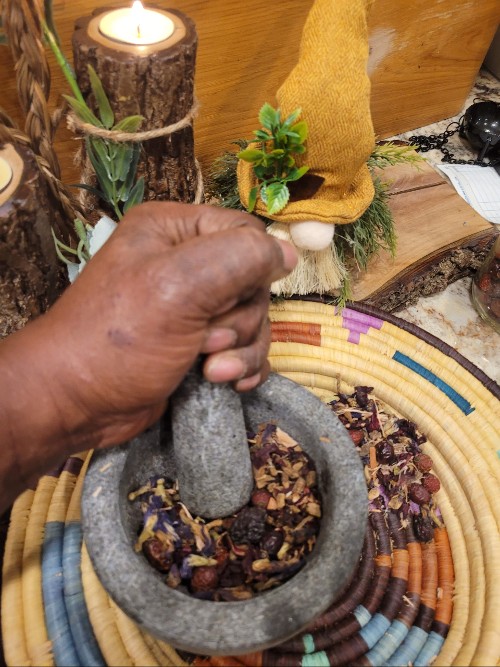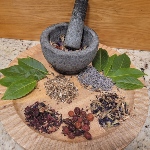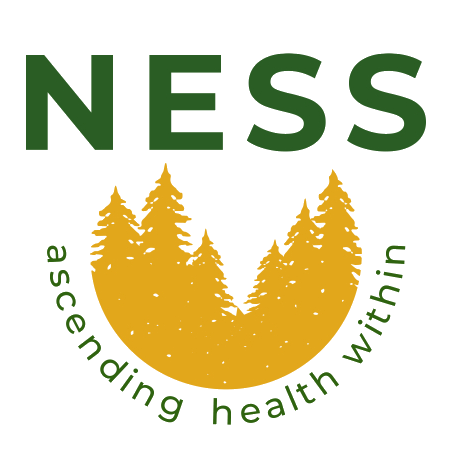BACKGROUND to HERBAL TRADITIONS
HERBAL TRADITIONS
The world of Herbalism is vast and varied, a veritable rainbow of traditions. This is what makes the study of herbal medicine so exciting and humbling. According to the World Health Organization (WHO), 70-80% of folks around the world utilize herbal medicine as a primary means of healthcare.
In this handout, we briefly explore a few different traditions, selected mainly due to having been ones that I, “Herbalista” Marcie Cohens, have explored over my years in practice. As a retired allied health professional with over 20 yrs. of experience, I learned many things about the pharmaceutical industry. Especially how they develop medicine. These herbal sketches are presented to help us notice some common themes and then we can apply these concepts to our work as community herbalists.
“WESTERN” TRADITIONS
Medical Herbalism
aka Phytotherapy
This is a Euro-Anglo-American tradition of herbal practice. This clinic-based approach utilizes herbal preparations to treat pathology (disease) and promote health and well-being. It is also known by many other names such as Naturopathy or Phytotherapy. There is a focus on strengthening and supporting the body’s vitality and own natural ability to heal itself. Phytotherapy (as all western medicine) grew out of the humoral tradition (see below).
“WESTERN” LINEAGE
Humourism aka Galenic, Unani
This Eurasian theory states that humans possess different balances of substances called “humors.” Illness (both physical and mental) was due to a deficiency or excess of these humors. Diet and herbs could be used to bring balance between the humors, and therefore bring about good health.
The humor possesses certain qualities and are associated with specific elements, energetics, emotions, and even seasons.
The Four Humors
- Black Bile – fall; earth; feces; cold and dry; melancholic (despondent and quiet)
- Phlegm –winter; water; mucus; cold and wet; phlegmatic (relaxed and peaceful)
- Blood –spring; air; blood; warm and moist; sanguine (optimistic and social)
- Yellow Bile –summer; fire; vomit; warm and dry; choleric (ambitious and restless)
“TRADITIONAL CHINESE MEDICINE” (TCM)
Based on a theory of yin and yang: opposing forces, both present in all things and both necessary for life. Harmony brings health, wellbeing, and sustainability. Disharmony leads to illness, disease and collapse.
YIN: “the shady side of the mountain” is cool, dark, moist, heavy, consolidating, etc.
YANG: “the sunny side of the mountain” is hot, bright, dry, light, expanding, etc.
The Five Phases
aka Five Elements
The Theory of Five Phases explains our experience of phenomena. It illustrates how everything is connected to each other through the control (overcoming) cycle and the nurture (generating) cycle. Each phase or element is associated with a season, emotion, color, yin and yang organ, etc.
- WOOD – Spring; beginnings; yang rising; moving energy and flexibility; the liver; leadership & anger; tears; green
- FIRE – Summer; full expression of yang; heat; the heart; joy; sweat; red
- EARTH – Late Summer; the still point, stability; the stomach; compassion & worry; saliva; yellow
- METAL – Fall; harvest; descent into yin; boundaries, judgment, and discrimination; the lungs; grief & lightheartedness; mucus; white
- WATER – Winter; one’s deepest reserves/ the well; storing and protecting; the kidneys/adrenals; fear & optimism; urine; dark blue and …
“AYURVEDA”
The Science of Life
Translated as “the knowledge of life,” Ayurveda is one of the world’s oldest medical systems and continues to be practiced around the world today. Originating in the Indian subcontinent, many foundational texts were written in the 4th and 3rd centuries BCE. The following is from the Sustruta Samhita (15.38) and describes a healthy person.
One who is established in Self, who has balanced doshas [energy patterns], balanced agni [digestive fire], properly formed dhatus [tissues], proper elimination of malas [waste], well-functioning bodily processes, and whose mind, soul and senses are full of bliss, is called a healthy person.
The Elements
- ETHER (akasha) – space, pure presence, all pervading, clear
- AIR (vayu) – movement, motion, the wind
- FIRE (tejas) – friction and fire, life, transformation, metabolism
- WATER (jala) – flow, fluidity, juices
- EARTH (prithvi) – cohesion, solidity, nurturing
- Vata – Ether + Air; cold and dry; movement; anxiety; creativity
- Pitta – Fire + Water; hot and oily; metabolism; anger and jealousy; courage
- Kapha – Water + Earth; cold and wet; storage; attachment; love and patience Yogic Lifestyle (Sivananda lineage)
- Proper Exercise (Asana)
- Proper Breathing (Pranayama)
- Proper Relaxation (Savasana)
- Proper Diet
- Positive Thinking + Meditation
(Vedanta, Dhyana) - Selfless Service
(Karma Yoga)
COMMUNITY HERBALISM
Community Herbalism is a philosophy of health and healing that extends beyond the individual and considers the larger ecosystem. Health is more than just your own isolated internal dynamics. Health is a response to our relationships, our environment, our access to care, the cultural and social structures we are immersed in, and so much more.
“The body doesn’t so much defend a particular set point as allow it to fluctuate in response to changing demands, including those of one’s social circumstances…Today it is clear that chronic diseases like hypertension, diabetes and heart failure are inextricably linked to the state of our neighborhoods, jobs and families. We must use this information in the fight against rising income inequality, high imprisonment rates and other social problems.”

COMMON THEMES of TRADITIONAL HEALING
Whole-human health – body and mind; both the physical and the emotional is considered when assessing wellbeing.
- Personal health is influenced by and inextricable from one’s environment and community.
- Classifying folks by “type” to focus on patterns of health so we can appreciate someone’s inherent strengths and support their areas of weakness).
- Striving to maintain good health, as opposed to a pathological approach whereby one offers care only after there is a health problem or incident.
- Ill health is viewed as the result of an imbalance in the system. The goal is to restore systemic balance as opposed to simply targeting an individual symptom.
- Health is understood based on observable patterns and is often described with metaphoric or climatic vocabulary that is accessible to the general public.
- Remedies are earth-based and either correct the elemental/energetic imbalance (i.e. cooling a hot condition); nourish and strengthen the person (tonic therapy); or remove the barriers to self-healing (cleansing/ detoxification).

HERBALISM AMERICANA
Herbalista was born and raised in United States on land that is the traditional home to the Muscogee, Cherokee and Indian Black peoples. They lived, traveled, and stewarded these lands until they were forcibly removed by the US government in the 1800’s. I want to acknowledge this history of genocide and to acknowledge the present connection these tribes still have to their original homelands. I acknowledge that this land is also now home to folks from all over the world, migrants who have come here for a multitude of reasons – economic or educational opportunity, to be near family, to flee violence or persecution, to escape environmental disasters… too many reasons to list them all here. We hope that all of us who call this land home will do our best to respect her and each other. May we be good stewards and honor our connection to this land.
The very first U.S. Pharmacopeia was written in 1820 and a majority of the medicines listed were of herbal origin. While many herbs were from Europe and other parts of the world, almost half were native to the Americas and used by the first peoples. In fact, access to these herbs was a main driver for the colonization of “America” and the genocide inflicted upon her first peoples. Witch Hazel, the Cohoshes, Goldenseal, Echinacea, and Lobelia, to name a few, were and still are incredibly important remedies in our herbal pharmacopeia.
Unfortunately, the history of herbal medicine in America, since colonization, is a history marked by appropriation and abuse. The white settler herbal traditions and much of the “modern” American herbal revival of the 60’s and 70’s, were built on herbal knowledge gained from the long-held traditions of native peoples, often without attribution. Adding to this knowledge base were the many traditions and plants brought by enslaved peoples from Africa (also by way of the Caribbean) and the wisdom and plant usage of traditional beliefs, rituals, and practices. And while I am aware of the troubled and disturbing origins of American Herbalism, I also would like to acknowledge the possibilities and opportunities for herbalism in America. We are privileged to have inspired herbal understanding that can only emerge in a land where folks come together from so many different places. This allows a multitude of traditions to rub shoulders with each other. My own personal herbal practice has been influenced by so many traditions– phytotherapeutic, TCM, ayurvedic, eclectic, African American, Celtic, and Latin to name but a few. It is this multi-spectrum lens that I believe allows you to perform COMMUNITY HERBALISM.
